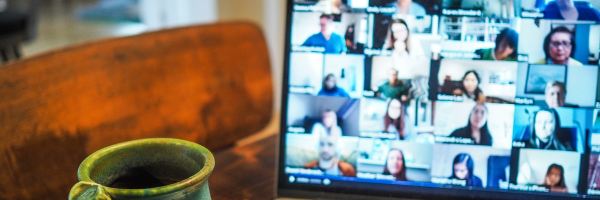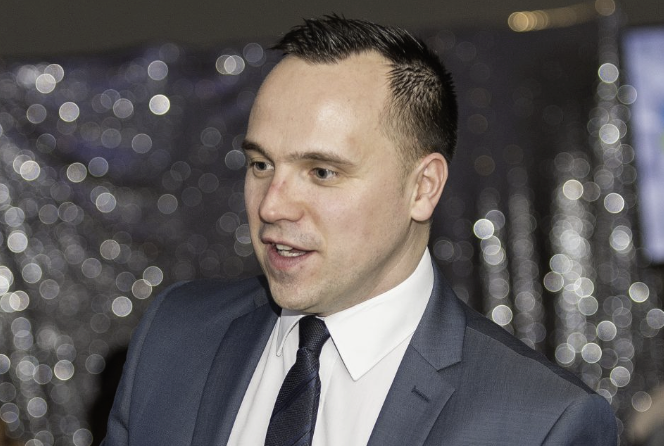Many people misunderstand non-verbal cues as a sign of disrespect or as the person being uninterested in what they are hearing.
A lot of people think that the person is bored and uninterested when in reality, they may just be daydreaming and thinking about what to say next.
Some people also think that the person is not interested in what they are speaking about when it could just be that their hands or feet are crossed because it is a comfortable position for them to sit in.
The way you position your body during a meeting can tell others how open you are to listening and how engaged you are with the conversation. If your arms are crossed, then it may seem like you don’t want to listen.
Body language is the silent language of the human body. It communicates how we are feeling without us even realizing it.
In this article, we will look at some of the most common body language cues in meetings and what they really mean.
Body language in business meetings

Body language is a very important part of communication, whether it be face-to-face or digital. Body language can say what words cannot.
Body language in business meetings is a tricky subject. On one hand, you want to appear professional and in control, but on the other hand, you want to be friendly and approachable.
It’s not just what you say but how you say it that counts – your body language is an important factor in how others perceive you. This can influence everything from your career to relationships with friends and family.
The way people behave when they are communicating is often very different than what they do when they are on their own or in private. When we talk to others, we make conscious decisions about how to behave based on our goals for communication. We might even change our behavior if we don’t feel like the communication is going well.
Body language can be a powerful tool when it comes to meetings. It’s a great way to project a strong and confident image, but it can also have an adverse effect on the outcome of the meeting. When you’re in a meeting, try to avoid these three things: slouching, avoiding eye contact, and fidgeting.
To make meetings more positive and productive some simple tips can be used. Open body language is a great way to invite participation, great people with a smile, and keeping your palms open at all times with an intent to listen can greatly improve the outcome of the meeting.
To get a more in-depth look at how to improve body language, check out his blog post here.
10 Ways To Improve Your Body Language In A Meeting
Body language is a very influential factor in communication. It can affect how others perceive you and can also affect your attachment to someone. While your tone and words might be able to tell the story of your message, body language is what they will remember. Here are 10 ways that you can improve your body language in a meeting:
- As you’re about to walk into a meeting smile.
- If you can’t say hello, flash your eyebrows to acknowledge that you have seen people in the meeting.
- Walk with your back straight and head held high.
- Sit up right when sitting down.
- Ensure your hand are above your belly button. (Know as the truth plan)
- Keep you hands and palms in view at all times.
- Point your feet towards the person you want to speak with.
- Tilt your head to show interest.
- Turn your head to the side to show an ear.
- Keep good eye contact
The above nonverbal techniques work when trying to create a positive outcome or first impression. Our suggestion would be to test out a few in your next meeting.
Body Language In Sales Meetings

Body language is an important tool in sales meetings because it is often hard to tell how your customer is really feeling or thinking. This makes it important for salespeople to read body language cues and learn how to use them appropriately in order to make a strong first impression and read any objections from the client. You can learn more about reading body language here.
For example, if you see lip compression on a certain part of the sales pitch, you know there is an objection to what is being said verbally. Or a sudden shift in their site when you mention the price of something or negotiate on a certain topic.
The important thing to remember in a sales meeting is context and a shift in their baseline. A baseline is when someone is relaxed and having a normal conversation and projecting their everyday nonverbals. When you see a shift in body language, you know you have hit your objective. You can address it accordingly.
Learning to read body language is super important if you want to increase your bottom line.
Body Language In Team Meetings

Body language is a huge factor in meetings. Meeting participants can tell how well they are doing or how strong their point is by looking at other people’s gestures, expressions, and other nonverbal cues.
There are four types of meaning that body language conveys. They are universal, which means that all cultures understand it; contextual, meaning different meanings in different contexts; personal meaning, which means that the person’s feelings or thoughts affect them; and miscellaneous or individual meaning.
It might be hard to read other people’s body language when you’ve never met them before. But if you learn to baseline someone, you can quickly understand their nonverbal communications (everyone’s is different).
- There are some quick wins when it come to team meetings.
- Make eye contact with every person in the room.
- Keep a strong warm true smile on your face.
- Nod when being spoken to so show understanding.
- Learn forward into a conversation to show interest.
- Practice critical listening. Listen with a free mind.
- Mirror and match their body lanauge to build rapport
- Use their words and reflect back.
- There are loads of cool tricks we can do to impove a team meeting. Over all just be nice and understanding.
Body Language In Virtual Meetings

Many people have a misconception about what body language is, and it’s a more complicated topic than some people think. A person’s body language can be interpreted in many different ways, but there are some universal behaviors that are recognized by most cultures. Some of these universal behaviors include eye contact, the direction of the speaker’s arms and legs, and posture.
In this article, we’re going to be talking about how body language is interpreted in virtual meetings. In a virtual meeting, there are different rules of conduct that you have to follow in order to get your point across correctly. A lot of times when people communicate remotely it can lead to misunderstandings because they lack visual cues such as facial expressions and gestures which would otherwise give them a clear understanding of what their conversation partner is trying to convey.
How To Set Up Winning Body Language In A Digital Meetings
Body language is a crucial aspect of communication. It is so important because it helps people to understand what the other person is thinking and feeling. In digital meetings, this becomes even more important because there are no physical cues to go off of. It becomes difficult for one person to understand the other’s feelings and thoughts, which can lead to misunderstandings and confusion.
To combat this, there are a few things that you can do to better understand what’s going on in a digital meeting.
In any online meeting, it’s important to take advantage of all the small details because they will tip the balance in your favor.
Correct Camera Angle
Most people are unaware of this small but important detail. Your camera angle is really important for getting your message across. You don’t want to have your camera so you’re looking down at people and on the flip side, you don’t want to be looking up at your camera. The perfect camera angle is face-on at eye level.
This does two things for people on the other end: it looks like you’re speaking to them directly and it helps to create eye contact.
You can set up your webcam correctly so that it faces you directly as if you’re talking to a person one-on-one. When setting up your camera, make sure you can see the lens. Do a test run with a lot of software like zoom and teams allow you to test your settings.
Microphone
When we talk about body language, many people don’t think that your voice has anything to do with it. However, nonverbal communication is as much about words as it is about the tone of voice as anything else. Remember the saying “It’s not what you say but the way that you say it”.
Get your microphones levels right, you want to create a more warm tone with a little bass in your voice. Think radio FM DJ voice.
Background
Backgrounds are really important. Consider what kind of background you want: a non-busy background with a neutral color such as white or cream. The focus needs to be on you, not what is going on in the room.
However, if you are going full-on and really want to impress, you may want to think about a more polished approach. Check out YouTube and see what the pros are doing or using on their channels. It’s down to personal preference.
OK, tech is all set up correctly now it’s time to think about how we will present ourselves.
Open Body Language
How To Read Body Language In Meetings

The ability to read body language is an important aspect of communication skills. It is the only way to get a sense of what someone might be thinking or feeling in an unspoken way.
Reading body language in meetings is vital because it provides clues on when to speak up and when not to interrupt when someone is ready to move on, and how someone feels about a suggestion.
The most common forms of non-verbal cues are facial expressions, gestures, and posture. These will indicate if someone agrees or disagrees with something that has been said or if they are just listening politely.
Reading body language isn’t as simple as it sounds. You have to study the topic and then practice what you’ve learned. However, there are some key aspects you can learn quickly.
When you notice someone go from comfortable to uncomfortable, this is usually an indication that something is wrong.
Unfortunately, there is no quick way to learn to read body language. You can start here by reading a blog post I wrote on reading body language.
Summary
There is a lot we can learn from reading body language in meetings, such as when someone disagrees with us or when they need to leave. We can notice shifts in their nonverbal behaviors and then adjust accordingly so that we can have a more productive meeting outcome.I highly recommend you learn body language and you can do so by going here.

